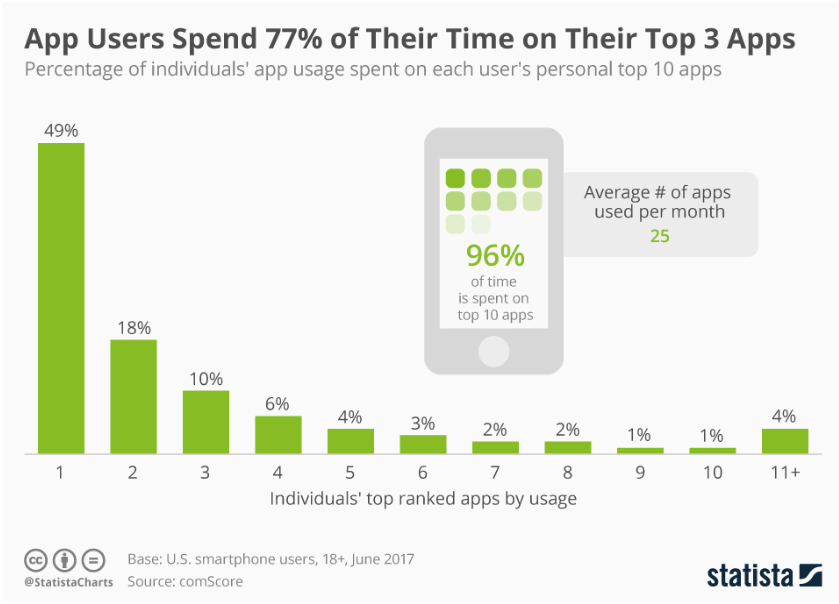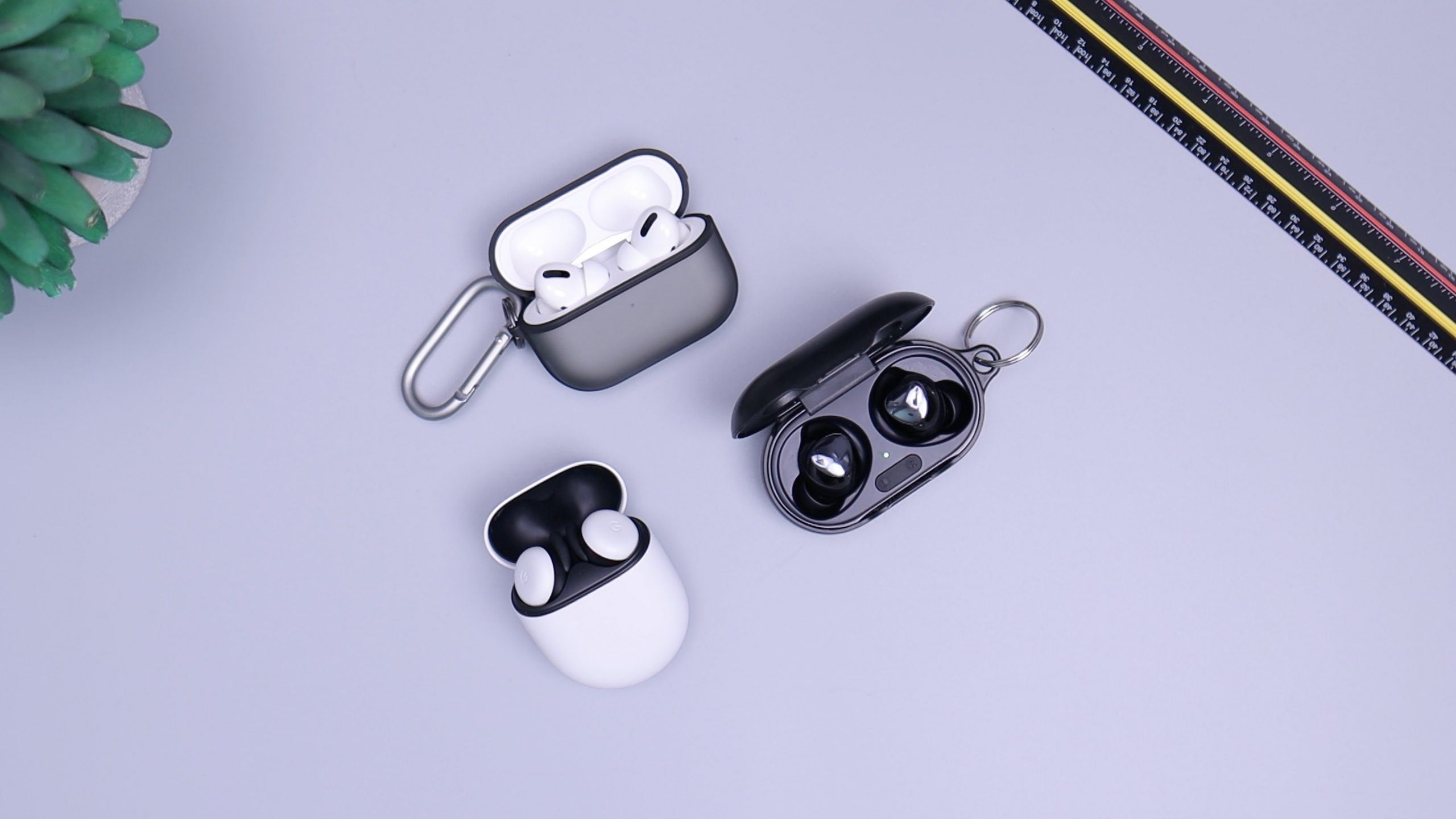Mobile retention and monetization are two of the biggest challenges for mobile app companies today, and they are becoming more and more difficult over time. More apps are available, acquisition costs are higher, privacy compliance restrictions (such as GDPR) increase, and more. In a world of free usage, some of the biggest, most popular apps never actually manage to become profitable and have to work very hard to retain their user base.
As Business of Apps put it in 2019: With around 90% free apps, and users invest 96% of their mobile time using the same 10 favorite apps, many apps struggle to make it.

App publishers thus find themselves constantly searching for new ways to make their products more engaging and viral.
We all know that ever fresh, user-generated content, plays a key role – but only a few manage to turn their apps into content monsters. Think about textual content, videos, music and even podcasts. We all wish we were TIkTok, Facebook or Waze… All these apps managed to get users to bring the content along with the usage. Amazing for them.
But how is that achievable when your app offers alarm clock functionality, a baby tracker or running statistics? You will most likely have to add content from 3rd parties (SDKs)…
At first, all of us in the industry embraced textual user-generated content (that’s blogging in case you were wondering), then static images, then came geo-location, then video became king, and lately, audio-talk is becoming the next big thing. It makes sense. We are always utilizing ourselves and are constantly evolving to consume more content in parallel, bringing our attention span to its limits. That’s just the way humans are. And we have the technology to fulfill our wishes.
Today, people are out (or in) and about, looking for educational, value-adding content they can consume while they’re busy doing other things (cooking, running, sitting next to their baby cradle, driving… you get the idea). When your eyes are already busy, you can still occupy your ears.
Back to our mobile app industry discussion: it’s not hard to see how audio-talk content can play a major role in boosting app engagement, retention and monetization. But then there’s the context issue. How would an app publisher add RELEVANT talk-audio playlists that fit their app? Apps are a dime a dozen, but each one is unique. Different apps offer different values, attract different audiences, belong to different sub categories. Where can you find content that you can customize to your app without spending your whole life creating it?
Last time I checked, content giants such as Facebook would be happy to sell on impression, but less likely to sell on content. While others such as Youtube, Medium, Taboola or alike offer content sharing business models, we don’t yet have many that do so with audio.
Audioburst
That is one of the main reasons we’ve created Audioburst for App Publishers to begin with. We wanted to let publishers easily add audio-talk playlists to their apps or websites.

Introducing bursts
We decided to introduce to the world the “audio bursts” concept – to kick talk-audio content up a notch by cropping podcasts and creating a library of just the nuggets (highlights), and continue doing it 24/7, at scale, to keep the playlists fresh and updated.
Building our huge network of the best podcasts in the world, with thousands of options was not enough. We had to harness our AI-based platform and its ability to highlight the best moments from different podcasts to help apps in different categories rise above the noise and succeed.

How is talk-audio content a game changer for apps?
1. Turning a static experience into a dynamic, customized and contextual one. Featuring fresh content that’s customized to fit both user preferences and the app’s functionality is a great way to keep users engaged and loyal for the long haul. Imagine a weather app that also includes a playlist of local news and anecdotes from different areas, or a photo app that creates a playlist tailored to the visuals it displays. Alarm clock? Easy! Add local news. Fitness? Lifestyle advice. Diet tracker? Nutritious. Baby tracker? Parenthood. There are so many options.
Mobile devices offer users a multisensory experience, and smart app creators utilize as many communication channels as possible. Your audience is probably already hooked on audio content; with 29.6 million consumers in the UK alone, you can only imagine what the numbers are in the US.
Being able to do that effortlessly and on the spot is meaningful, which is what Audioburst SDK brings to the table. Adding relevant playlists to your app should result in more and longer sessions, higher retention rates, and an improved user LTV. Simply put, you give users more reason to stay and log-in more frequently.
2. Seamlessly adding a new monetization layer that does not interfere with the others. As mentioned, app owners are always looking for new ways to monetize their app. One of the challenges is doing so without irritating users. Clevertap claims that that the #3 reason users uninstall apps is due to excessive advertising, which makes overcoming this challenge particularly crucial. Sponsored audio bursts are a soft form of ads that users can not only live with but actually like.
3. Justifying re-engagement communications. You already know the #3 reason for deleting apps, but can you guess the #1 reason for this unfortunate decision? That would be irrelevant. When users no longer open an app, they have no reason to keep it, which is why investing in a re-engagement mechanism is important. This obviously doesn’t mean that sending constant notifications to users when there’s nothing real to say is a good idea, because it is far more likely to irritate them and drive them to remove it even faster. The golden path is finding a good enough reason to bring users back to your app. Sending alerts on new, specific content is a great example.
4. Gaining insights on users’ interests. Playlists usage analytics offer a window into users’ minds, letting you know which topic is worth focusing on and allowing you to continue building your app with the right priorities in mind.

Conclusion
Audio talk content will soon become a commodity, just like video content did. And just like video content, new short-form content will be attractive to all of us, the people that are always toggling between endless things, and want to get the gist of it, the essence, the TL;DR executive summary. That’s the concept behind adding audio-burst playlists to mobile apps.



